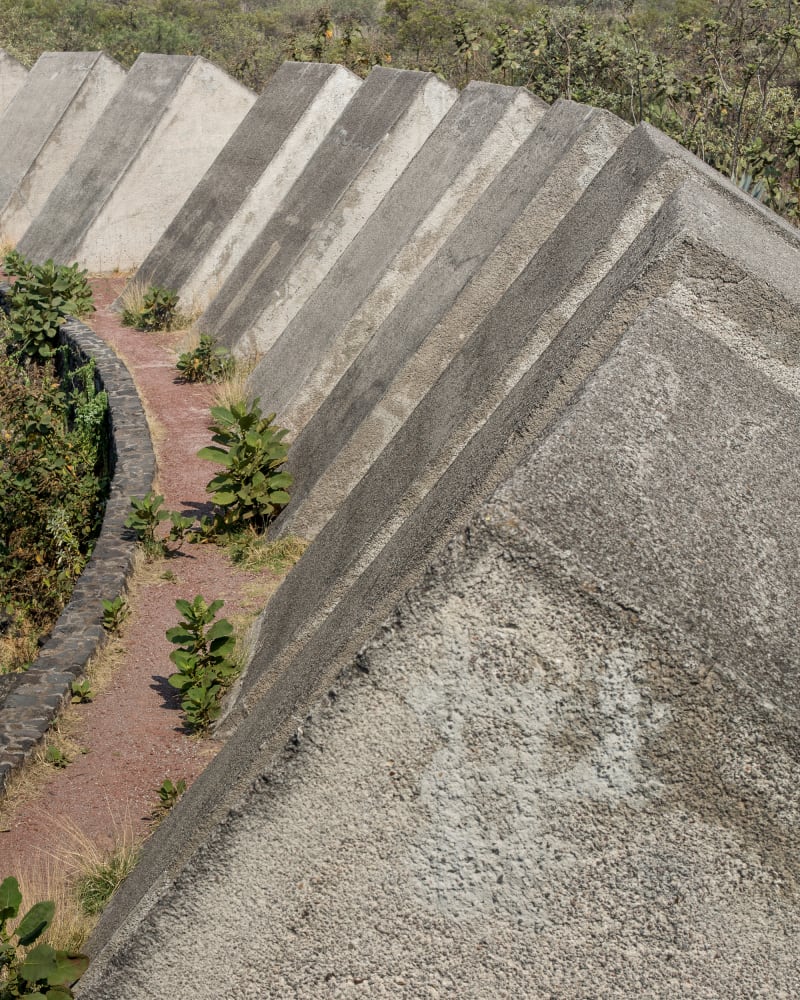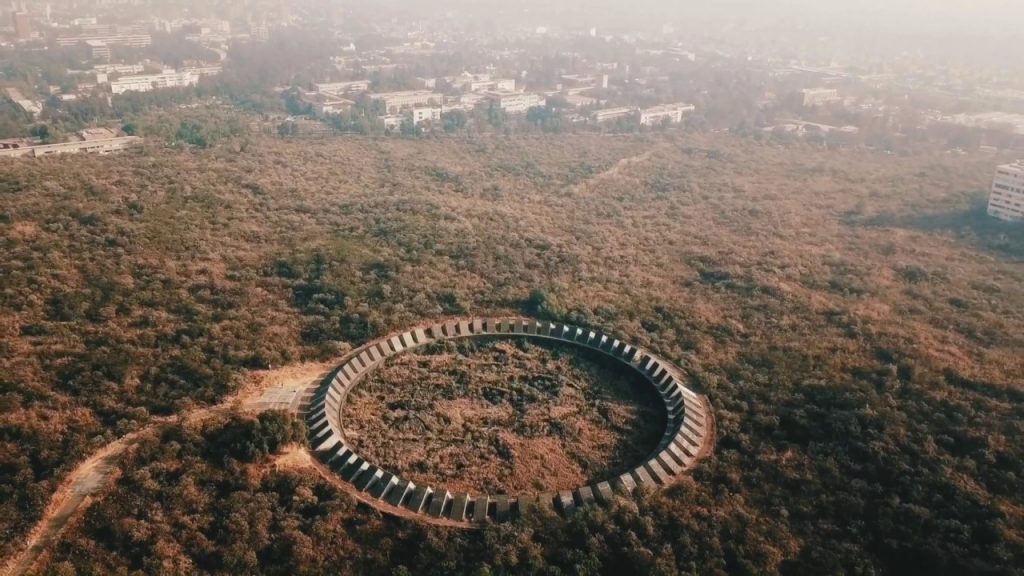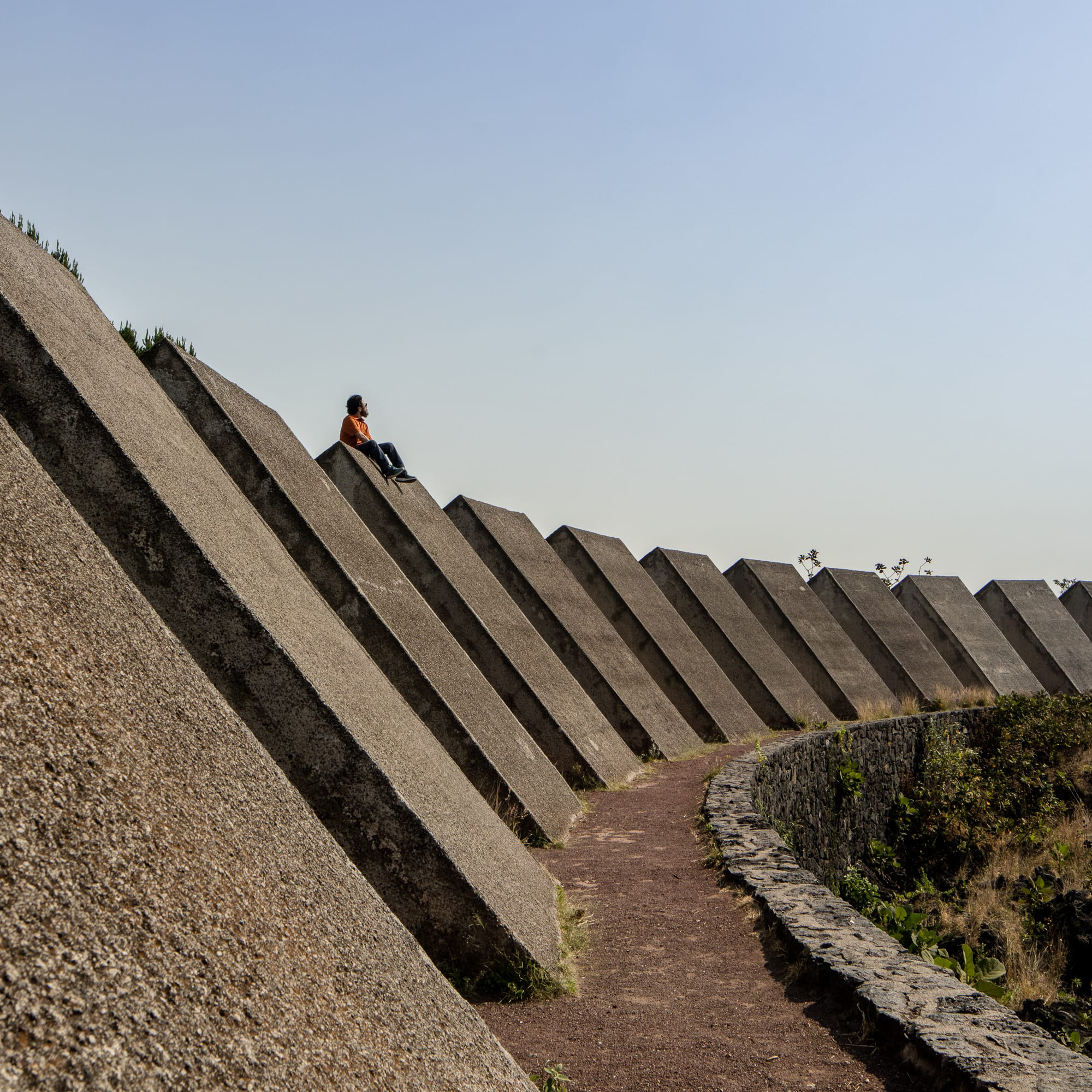Inaugurated on April 23th, 1979, this emblematic space wascreated by six artists: Federico Silva, Helen Escobedo, Manuel Felguérez, Matías Goeritz, Hersúa and Sebastián, who attempted to make from the art, an event for everybody and forever.
Inaugurado el 23 de abril de 1979, este sitio emblemático fue ideado por seis artistas: Federico Silva, Helen Escobedo, Manuel Felguérez, Matías Goeritz, Hersúa y Sebastián, quienes buscaron “hacer del arte un acontecimiento para todos y para siempre”.
It was an artistic expression, “after going through the glorius times of muralism”. The sculptural scape belongs to a later generation and speaks about the continuous creativity of Mexican artists and the invitation of the University to participate and become part of it (…)
Fue una nueva expresión artística, “después de haber pasado por los gloriosos momentos del muralismo”. El Espacio Escultórico pertenece a una generación posterior y habla de la creatividad continuada de los artistas mexicanos y de cómo la Universidad los invita a participar, a ser parte de ella (…)
“If any of the artists work that make this team, does not survive them, the sculptural space, because of its collectivism and anonymity, will endure as the most important collective attempt at public art in recent years” the participants then said.
“Si a los artistas que formamos este equipo de trabajo no le sobrevive alguna de sus obras, el Espacio Escultórico, por todo lo que tiene de oculto y anónimo, habrá de perdurar como el intento colectivo de arte público más importante de los últimos años”, dijeron entonces los participantes.
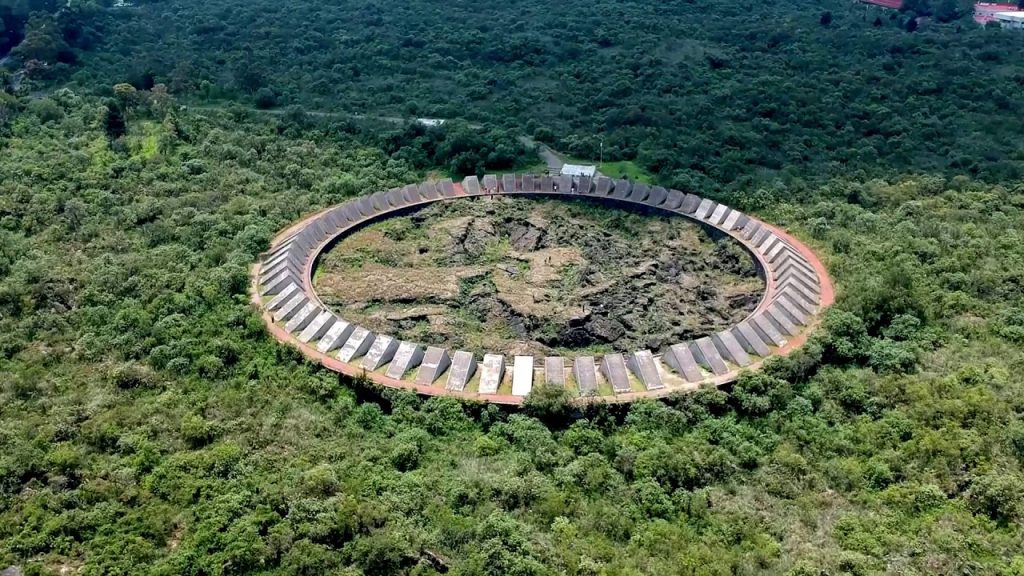
Located in the area of the University Cultural Center, this complex is a representation of the cosmos with pre-Hispanic references, surrounded by the Pedregal de San Ángel Ecological Reserve.
Ubicado en la zona del Centro Cultural Universitario, este complejo es una representación con referencias prehispánicas del cosmos, rodeado de la Reserva Ecológica del Pedregal de San Ángel.
It is one of the first works of what is now called Land Art, the one that can be seen from above and that is part of the configuration of our planet.
Se trata de una de las primeras obras de lo que hoy se denomina Land Art (arte de la tierra), aquel que se puede ver desde las alturas y que forma parte de la configuración de nuestro planeta.
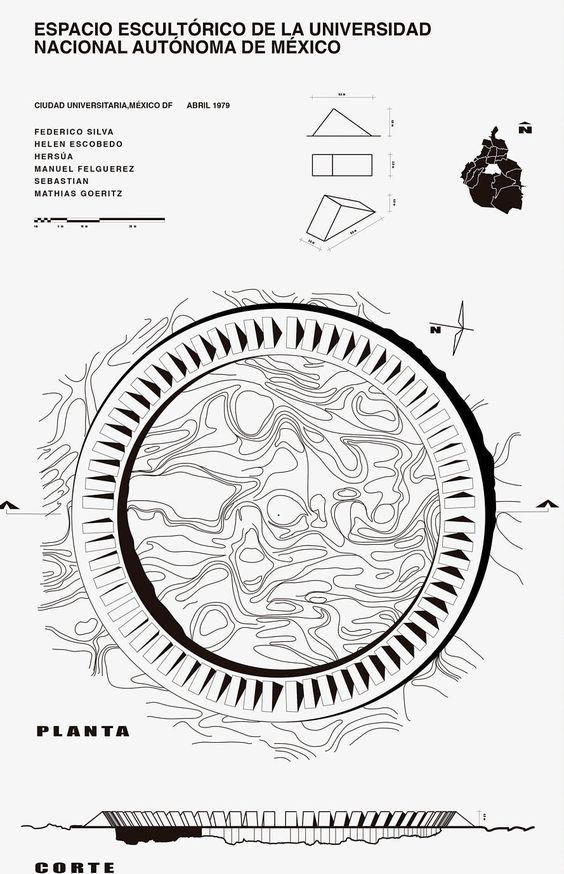
Sculptural Space
Espacio escultórico
It is a monumental space, a surface of natural terrain that is made of two pieces: a platform and a series of geometric figures, 64 modular triangles with a rectangular base of 9×3 meters, and a height of 4 meters. The outer diameter of this platform is 120 meters, while in the inner area it measures 92.78 meters
Es un espacio monumental, una superficie de terreno natural que se compone de dos partes: una plataforma de desplante y una serie de figuras geométricas, 64 triángulos modulares de base rectangular de nueve por tres metros, con una altura de cuatro metros. El diámetro exterior de dicha plataforma es de 120 metros, mientras que en la zona interior mide 92.78 metros.
(…)
The six sculptors met for months. They chose a site in a place that was barely open to university students and society, and they proposed to do something simple, but powerful: a huge circular ring contained with breaststroke, and at the center the lava from the Xitle volcano, thus maintaining strength from the eruption of around two thousand years ago.
Los seis escultores se reunieron durante meses. Eligieron un sitio en un nuevo lugar que apenas se abría para los universitarios y la sociedad, y plantearon hacer algo sencillo, pero poderoso: un enorme anillo circular contenido con piedra braza, y al centro la lava del volcán Xitle, así se mantuvo la fuerza de la erupción de hace alrededor de dos mil año.
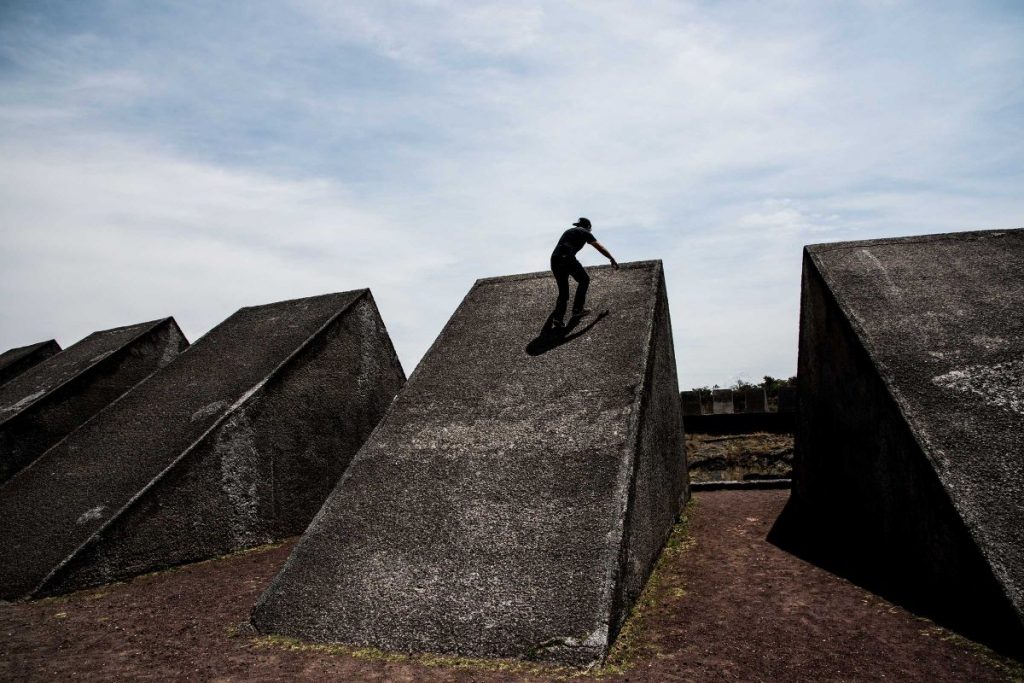
The work of 64 modules –separated by the same distance, except for a larger separation in four points: north, south, east and west– “was notorious at the time”; Furthermore, only one access was built with tiles that were also designed by the artists.
La obra de 64 módulos –separados por la misma distancia, salvo una separación mayor en cuatro puntos: norte, sur, este y oeste– “resultó notoria en su momento”; además, se construyó sólo un acceso con unas baldosas que también fueron diseñadas por los artistas.

In 1979, the participating artists already had a long career, which continued with great significance. At that time they were already important and they continued to demonstrate their quality; its resonance in Mexican art and on an international scale.
En 1979, los artistas participantes ya tenían una amplia trayectoria, que continuaron con gran trascendencia. En ese momento ya eran importantes y siguieron demostrando su calidad; su resonancia en el arte mexicano y a escala internacional ha sido clave.
In the early days of the Sculpture Space, concerts were offered, because they discovered that lava has acoustic qualities. (…)
En la primera época del Espacio Escultórico se ofrecían conciertos, porque descubrieron que la lava tiene cualidades acústicas. (…)
(…)
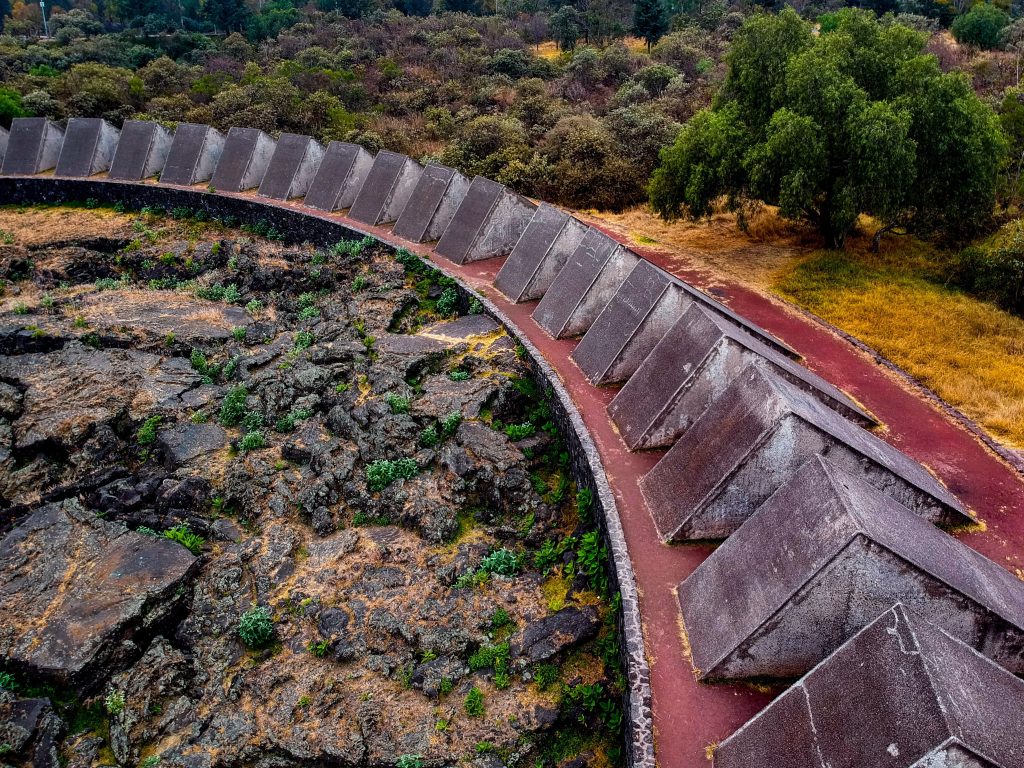
Next to the Space and to one side of the National Library and Newspaper Library building, a sculptural walk was later created made up of works by the artists themselves: The Serpents of Pedregal and Ocho Conejo, by Silva; Ave dos, by Hersúa; Coatl, from Escobedo; Colotl, by Sebastián; Corona del Pedregal, by Goeritz, and Variante de la Llave de Kepler, by Felguérez.
Junto al Espacio y a un costado del edificio de la Biblioteca y Hemeroteca nacionales, se creó luego un paseo escultórico conformado por obras de los propios artistas: Las serpientes del Pedregal y Ocho Conejo, de Silva; Ave dos, de Hersúa; Coatl, de Escobedo; Colotl, de Sebastián; Corona del Pedregal, de Goeritz, y Variante de la Llave de Kepler, de Felguérez.
Text via Dirección General de Comunicación Social / Translation by Hidden Architecture
Cover Image by James Florio Photography
